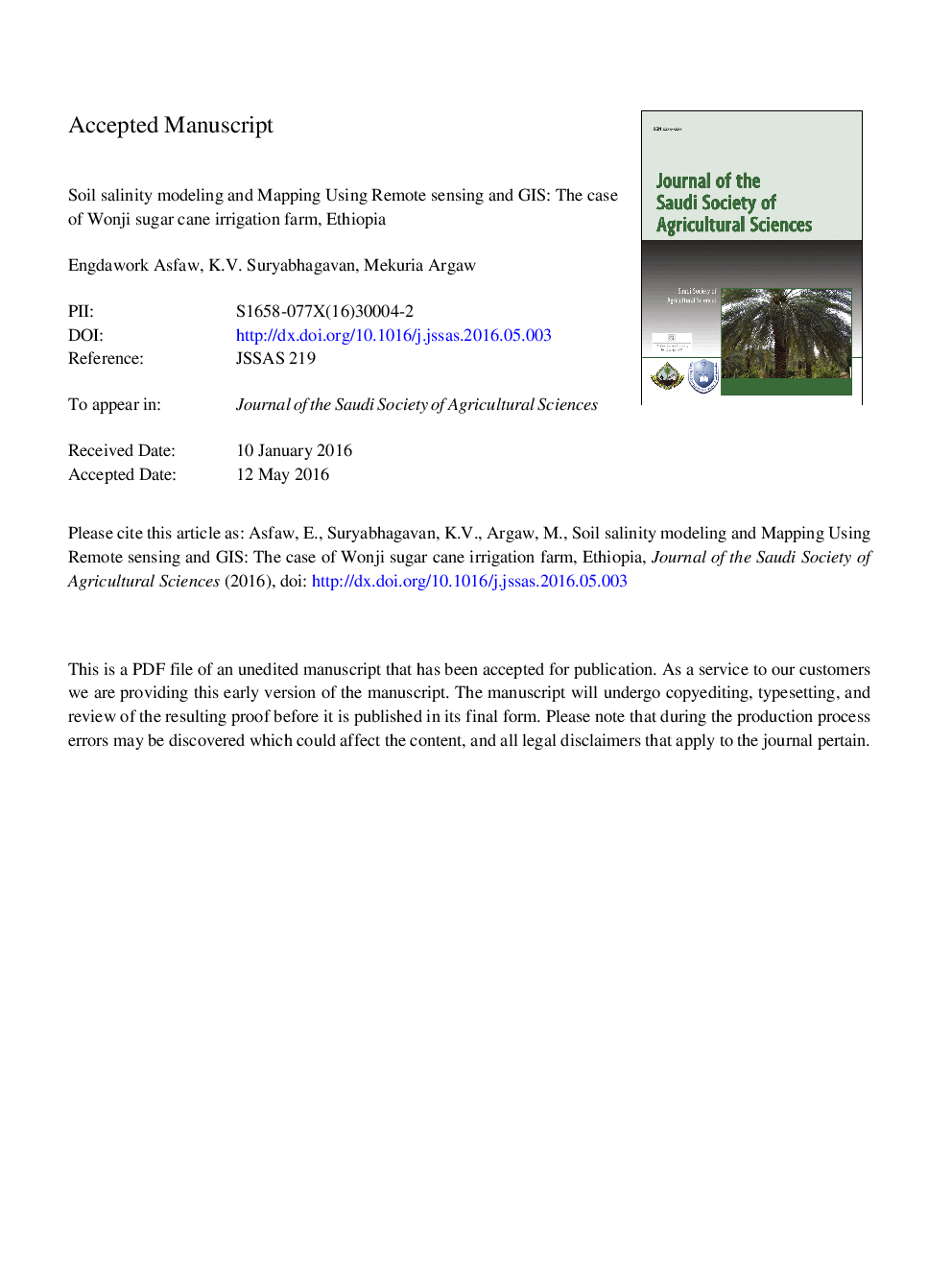| Article ID | Journal | Published Year | Pages | File Type |
|---|---|---|---|---|
| 8876305 | Journal of the Saudi Society of Agricultural Sciences | 2018 | 22 Pages |
Abstract
Soil salinization is one of the most common land degradation processes, especially in arid and semi-arid regions, where precipitation exceeds evaporation. Under such climatic conditions, soluble salts are accumulated in the soil, influencing soil properties with ultimate decline in productivity. An integrated approach using remote sensing in addition to various statistical methods has shown success for developing soil salinity prediction models. The present study presents a model to map soil salinity using remote sensing and geographic information systems. Different spectral indices were calculated from original bands of landsat images. Statistical correlation between field measurements of electrical conductivity (ECe) and remote sensing spectral indices showed that salinity index (SI) had the highest correlation with ECe. Combining these remotely sensed and ECe variables into one model yielded the best fit with R2Â =Â 0.78. The result obtained from SI was not only area-wise, but also with its intensity. Out of the total area, 18.8% and 23% were identified as moderately and slightly saline, respectively. This shows that remote sensing data can be effectively used to model and map spatial variations of soil salinity in irrigation areas.
Related Topics
Life Sciences
Agricultural and Biological Sciences
Agricultural and Biological Sciences (General)
Authors
Engdawork Asfaw, K.V. Suryabhagavan, Mekuria Argaw,
